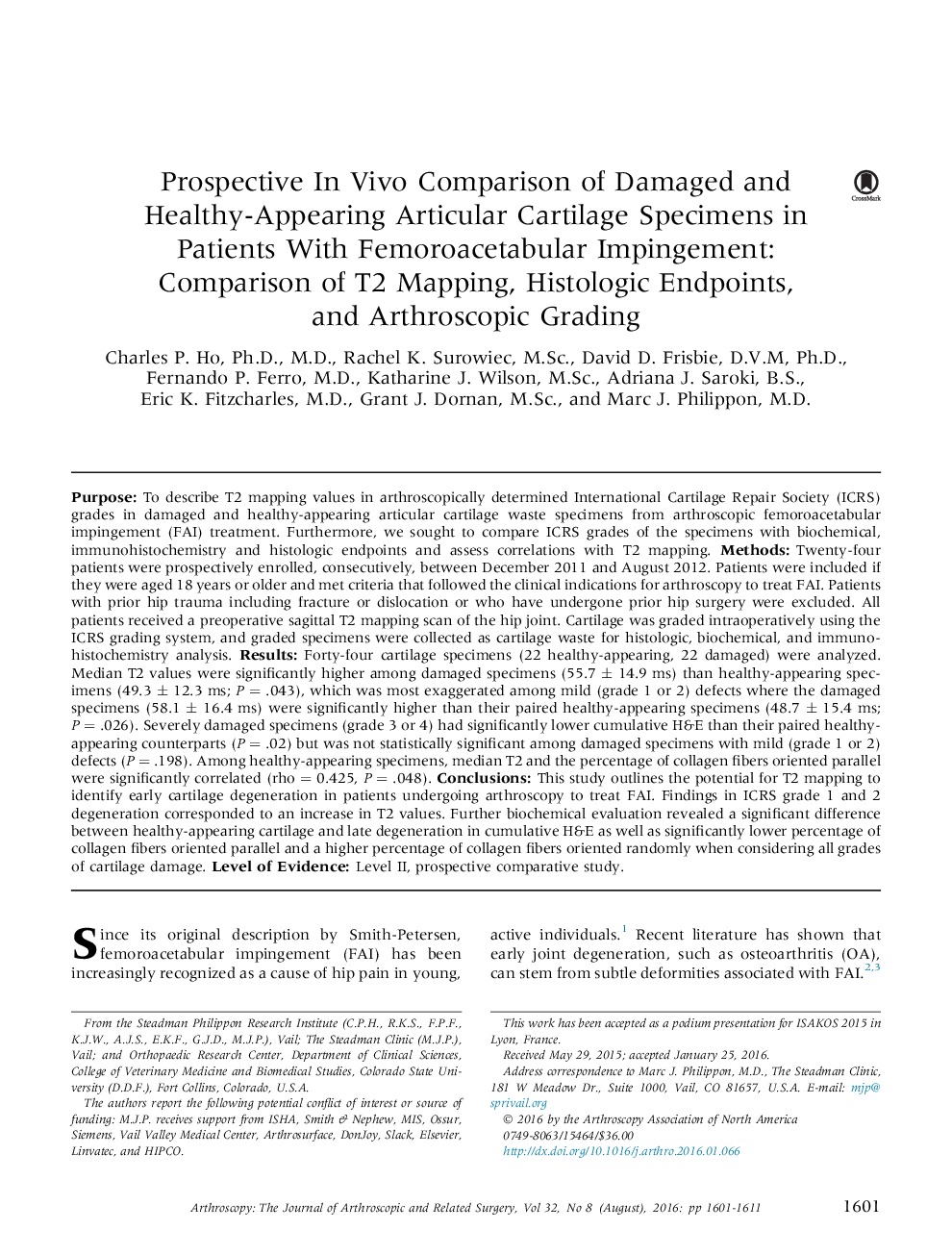| Article ID | Journal | Published Year | Pages | File Type |
|---|---|---|---|---|
| 4041798 | Arthroscopy: The Journal of Arthroscopic & Related Surgery | 2016 | 11 Pages |
PurposeTo describe T2 mapping values in arthroscopically determined International Cartilage Repair Society (ICRS) grades in damaged and healthy-appearing articular cartilage waste specimens from arthroscopic femoroacetabular impingement (FAI) treatment. Furthermore, we sought to compare ICRS grades of the specimens with biochemical, immunohistochemistry and histologic endpoints and assess correlations with T2 mapping.MethodsTwenty-four patients were prospectively enrolled, consecutively, between December 2011 and August 2012. Patients were included if they were aged 18 years or older and met criteria that followed the clinical indications for arthroscopy to treat FAI. Patients with prior hip trauma including fracture or dislocation or who have undergone prior hip surgery were excluded. All patients received a preoperative sagittal T2 mapping scan of the hip joint. Cartilage was graded intraoperatively using the ICRS grading system, and graded specimens were collected as cartilage waste for histologic, biochemical, and immunohistochemistry analysis.ResultsForty-four cartilage specimens (22 healthy-appearing, 22 damaged) were analyzed. Median T2 values were significantly higher among damaged specimens (55.7 ± 14.9 ms) than healthy-appearing specimens (49.3 ± 12.3 ms; P = .043), which was most exaggerated among mild (grade 1 or 2) defects where the damaged specimens (58.1 ± 16.4 ms) were significantly higher than their paired healthy-appearing specimens (48.7 ± 15.4 ms; P = .026). Severely damaged specimens (grade 3 or 4) had significantly lower cumulative H&E than their paired healthy-appearing counterparts (P = .02) but was not statistically significant among damaged specimens with mild (grade 1 or 2) defects (P = .198). Among healthy-appearing specimens, median T2 and the percentage of collagen fibers oriented parallel were significantly correlated (rho = 0.425, P = .048).ConclusionsThis study outlines the potential for T2 mapping to identify early cartilage degeneration in patients undergoing arthroscopy to treat FAI. Findings in ICRS grade 1 and 2 degeneration corresponded to an increase in T2 values. Further biochemical evaluation revealed a significant difference between healthy-appearing cartilage and late degeneration in cumulative H&E as well as significantly lower percentage of collagen fibers oriented parallel and a higher percentage of collagen fibers oriented randomly when considering all grades of cartilage damage.Level of EvidenceLevel II, prospective comparative study.
